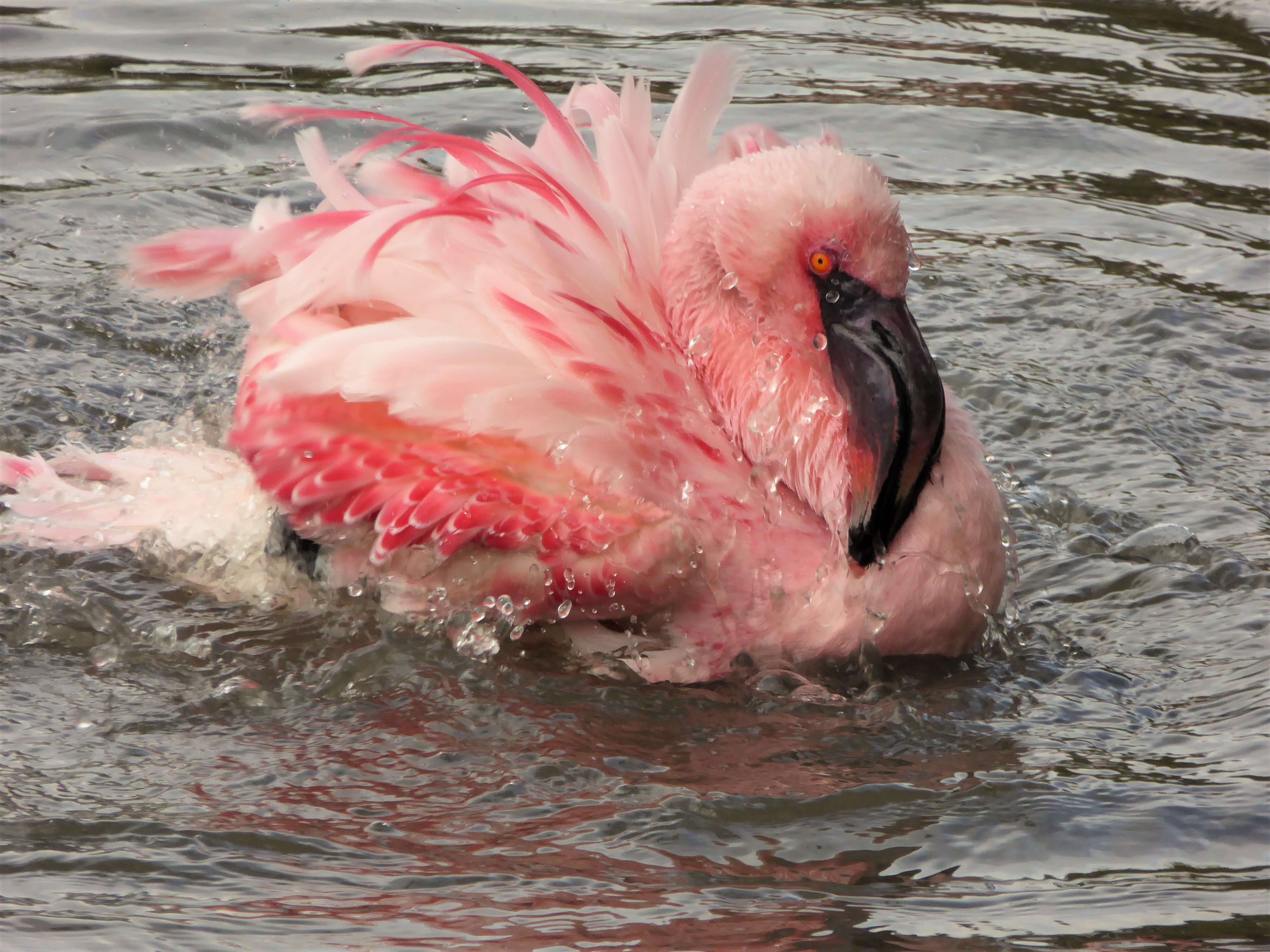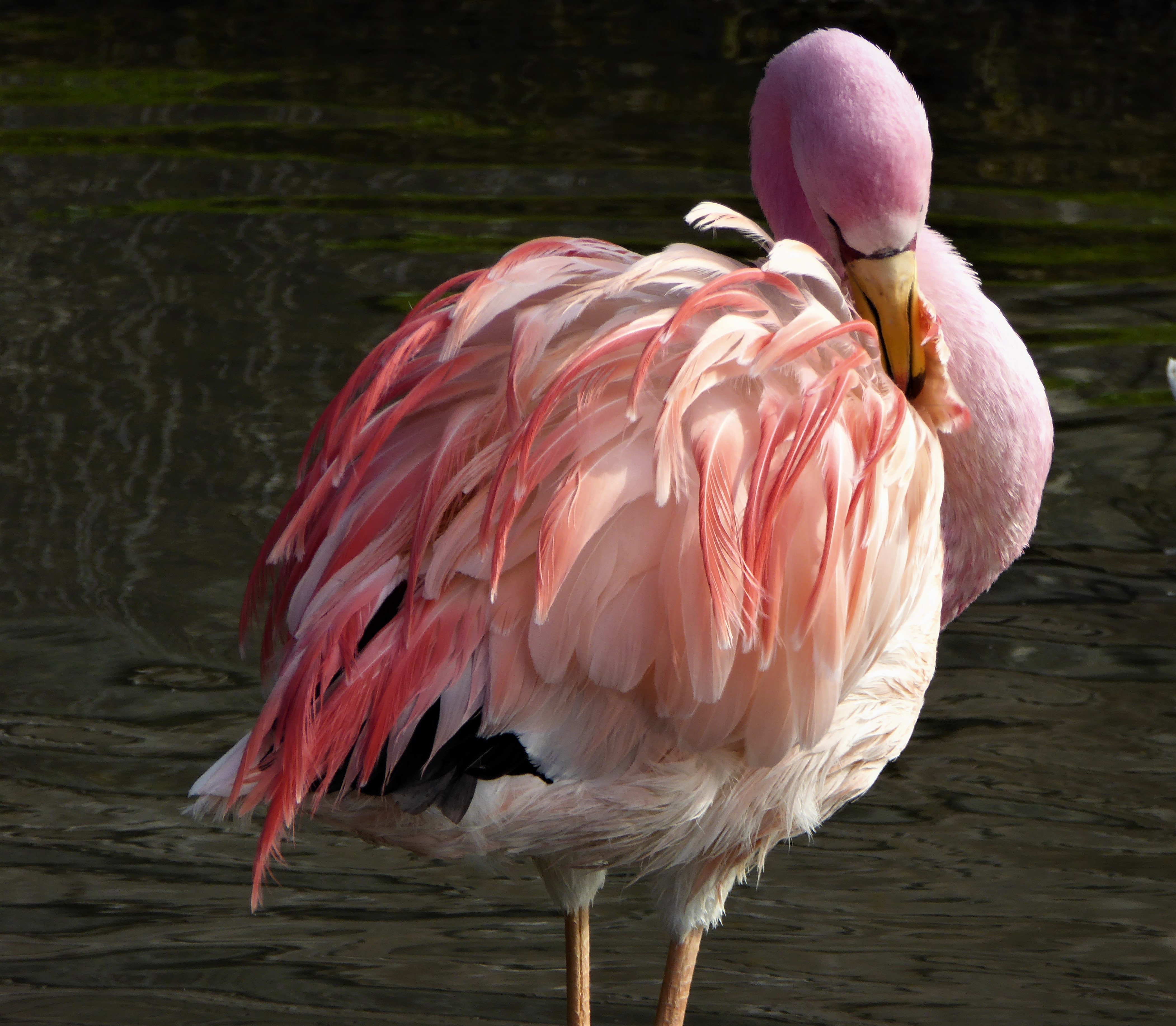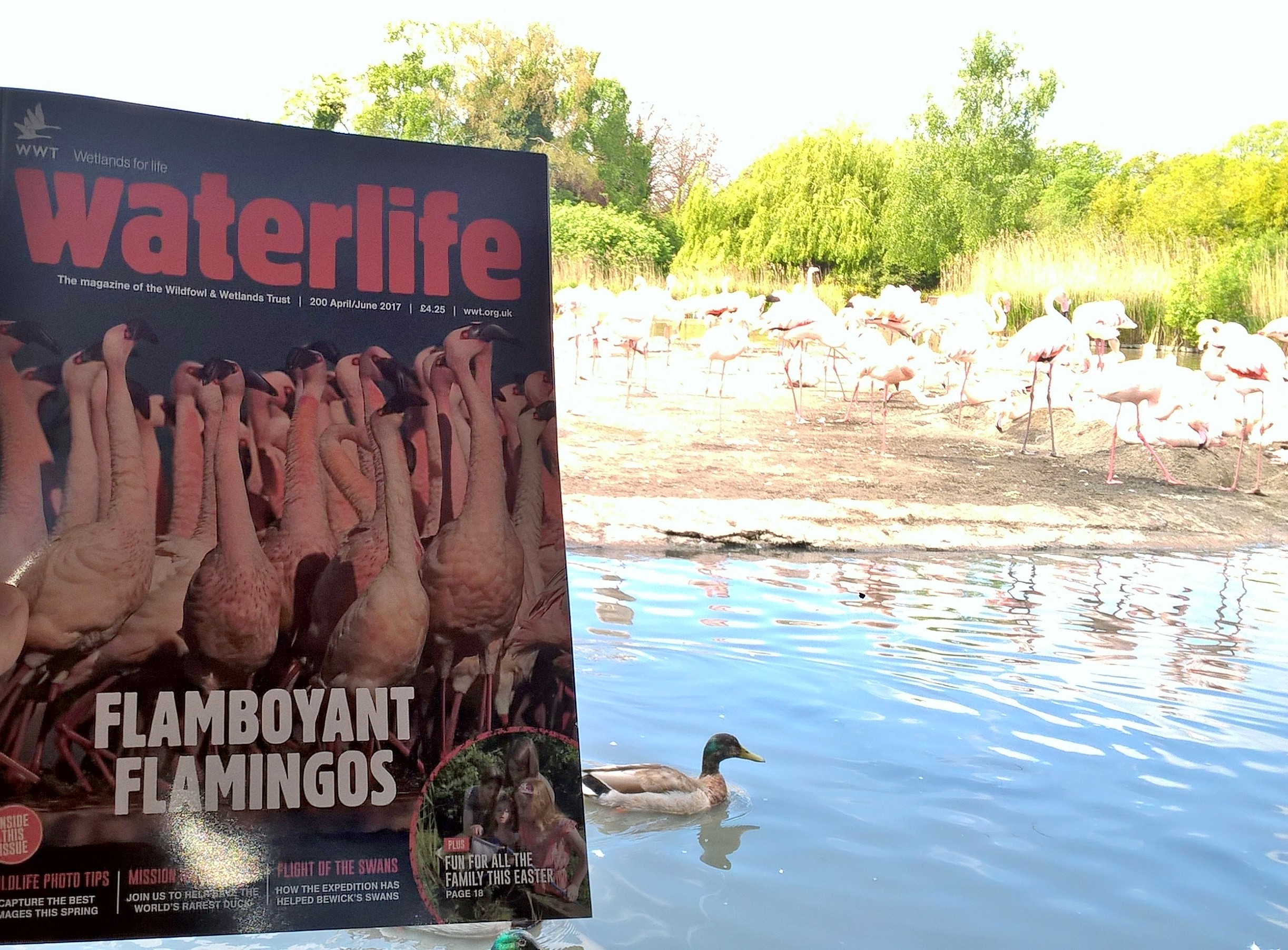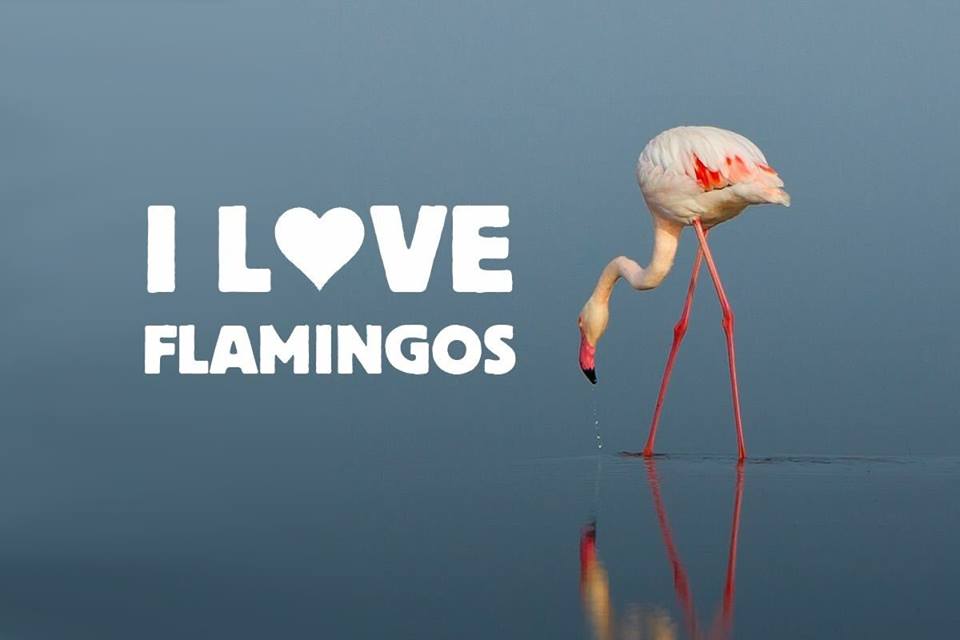May's flamingo fiesta
Hello flamingo followers. May has been an exciting month so far in the world of flamingos. Last week, WWT celebrated a flamingo fiesta on their Facebook and Twitter feeds to share the love of these amazing birds as widely as possible. With eggs in the greater and Caribbean flocks, and nest building in other groups, it was a good week to celebrate the flamboyant and fantastic nature of flamingos. Note, flamboyant is the word when watching the lesser flamingos have a bath (below)!
As part of the fiesta, we were able to share some amazing flamingo insights, such as these close-up shots of a greater flamingo filtering for its dinner. You can see how the bird uses it tongue as a piston to pump water across the sieve-like filtering material that line its beak. All species of flamingo feed in this way. Greater flamingos have a wide-ranging and varied diet of plants and animals. Whilst this is still a very intricate way of feeding, they are not as precise as some of the other species, for example the lesser and James' flamingos, which have very fine, very tightly-packed filtering "hairs" for extracting the smallest particles of food.
https://www.facebook.com/WWTworldwide/videos/13200...
So what were the key reasons behind this fiesta of all things flamingo? It's currently the best time of year to see the birds at their peak plumage colour, and displaying all of their strange yet fascinating behaviour (from courtship, to nest building). Despite being so familiar to us, there are still some misconceptions about our pink bird friends, so it is a good opportunity to tell the WWT audience, and beyond, more about them and their habits. I'd like to say that the birds themselves were keen to join in, but we obviously can't know that! However, all flamingos currently look amazing. Check Mr James in his finery, below.
The close proximity of flamingos and people at WWT Slimbridge, and the other centres where you find them, means telling the story of why the flamingo is like it is, and why it lives in the habitats that it does, is easy. You can readily capture the imagination of young and old by getting them to stare through the legs of the greater flamingo flock, for example. Yes, that is a thing you can do at Slimbridge if you have not seen before (photo below)!
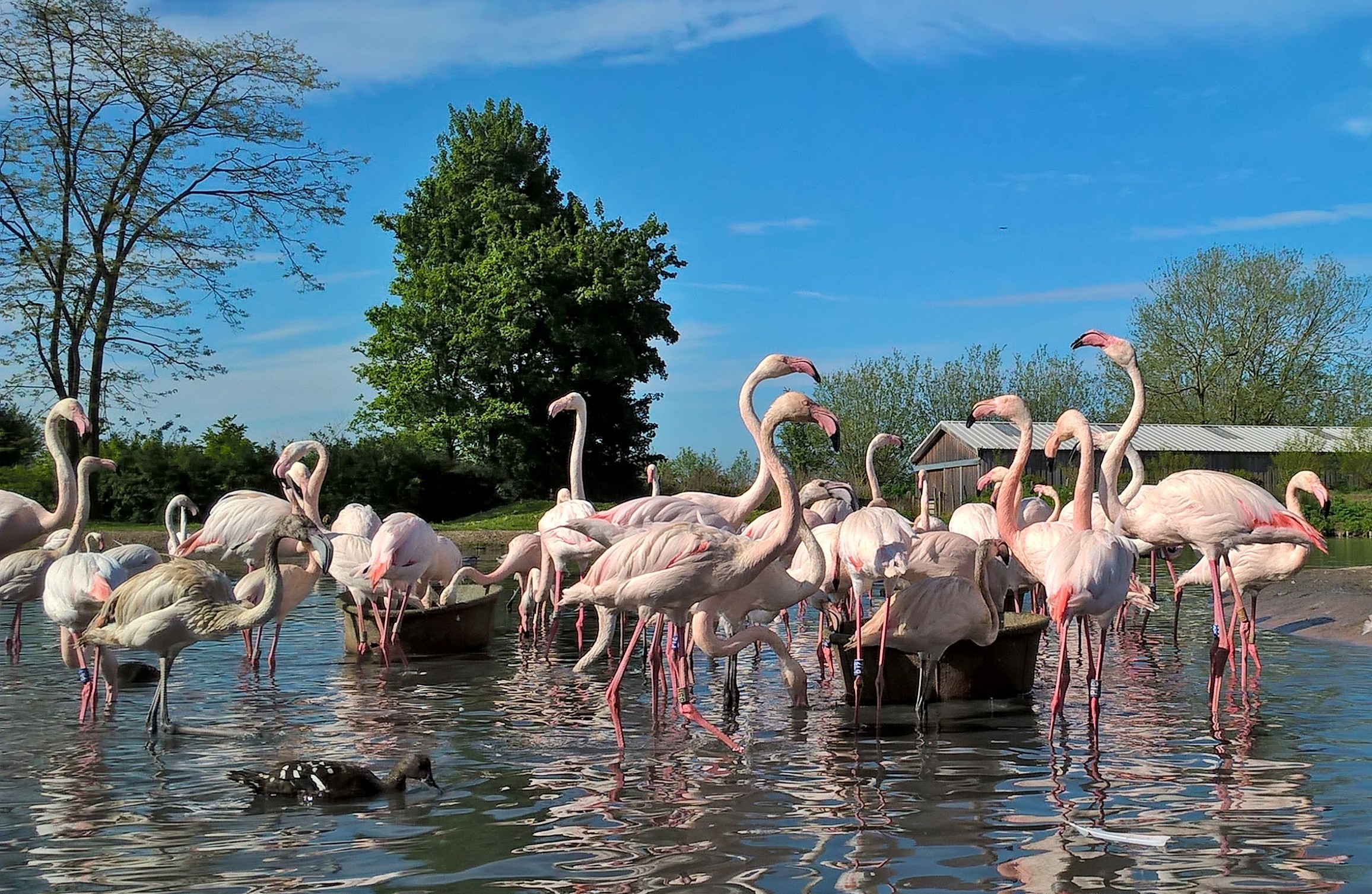 Viewed from inside the hide in Flamingo Lagoon, you can get a different perspective on flamingo life.
Viewed from inside the hide in Flamingo Lagoon, you can get a different perspective on flamingo life.
If you would like to know more about the week-long fiesta, we did a live broadcast celebrating all six species, explaining some important facts and figures about conservation, and highlighting the importance of the flamingo's wetland habitat to its continued existence in the wild. If you missed this when it was aired live, then you can watch it below.
https://www.facebook.com/WWTworldwide/videos/13199...
If you were unable to follow all of the posts and stories from the last week then have a look on the WWT Facebook page (facebook.com/WWTworldwide) and Twitter feed (@WWTWorldwide) where you can catch up on all flamingo trivia that was posted. Also, the May episode of WWT's "Wildwatch" YouTube programme also features flamingos, and you can see them brilliant footage of the birds, nose-to-beak, from the go-pro cameras installed into some of the enclosures. See the link below.
Finally, for those of you that are WWT members, you will have seen that the current (April-June) edition of "Waterlife" magazine has its main feature and cover story all about flamingos. This article will tell you more about each of the six types of flamingo, where you can see them at WWT's various centres, and lots of other lovely facts about their biology, ecology and behaviour.
I hope you can see that we have been working hard to promote these amazing species as much as we can. If this diary entry and the flamingo fiesta has sparked any other questions about the flamingos, their habits and habitats, then do post them here or on the WWT Facebook page and we can respond and tell you more. Until next time, keep loving the pink birds.
We love flamingos. And we hope you do too!
